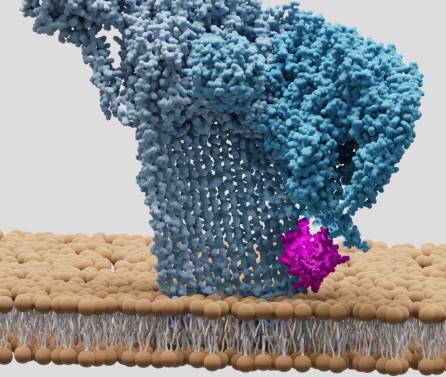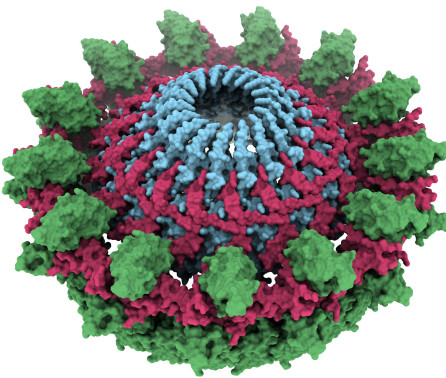BibTex format
@article{Chaban:2015:10.1016/j.semcdb.2015.10.032,
author = {Chaban, B and Hughes, HV and Beeby, M},
doi = {10.1016/j.semcdb.2015.10.032},
journal = {Seminars in Cell & Developmental Biology},
title = {The flagellum in bacterial pathogens: For motility and a whole lot more.},
url = {http://dx.doi.org/10.1016/j.semcdb.2015.10.032},
year = {2015}
}
RIS format (EndNote, RefMan)
TY - JOUR
AB - The bacterial flagellum is an amazingly complex molecular machine with a diversity of roles in pathogenesis including reaching the optimal host site, colonization or invasion, maintenance at the infection site, and post-infection dispersal. Multi-megadalton flagellar motors self-assemble across the cell wall to form a reversible rotary motor that spins a helical propeller - the flagellum itself - to drive the motility of diverse bacterial pathogens. The flagellar motor responds to the chemoreceptor system to redirect swimming toward beneficial environments, thus enabling flagellated pathogens to seek out their site of infection. At their target site, additional roles of surface swimming and mechanosensing are mediated by flagella to trigger pathogenesis. Yet while these motility-related functions have long been recognized as virulence factors in bacteria, many bacteria have capitalized upon flagellar structure and function by adapting it to roles in other stages of the infection process. Once at their target site, the flagellum can assist adherence to surfaces, differentiation into biofilms, secretion of effector molecules, further penetration through tissue structures, or in activating phagocytosis to gain entry into eukaryotic cells. Next, upon onset of infection, flagellar expression must be adapted to deal with the host's immune system defenses, either by reduced or altered expression or by flagellar structural modification. Finally, after a successful growth phase on or inside a host, dispersal to new infection sites is often flagellar motility-mediated. Examining examples of all these processes from different bacterial pathogens, it quickly becomes clear that the flagellum is involved in bacterial pathogenesis for motility and a whole lot more.
AU - Chaban,B
AU - Hughes,HV
AU - Beeby,M
DO - 10.1016/j.semcdb.2015.10.032
PY - 2015///
SN - 1096-3634
TI - The flagellum in bacterial pathogens: For motility and a whole lot more.
T2 - Seminars in Cell & Developmental Biology
UR - http://dx.doi.org/10.1016/j.semcdb.2015.10.032
UR - http://hdl.handle.net/10044/1/27437
ER -

